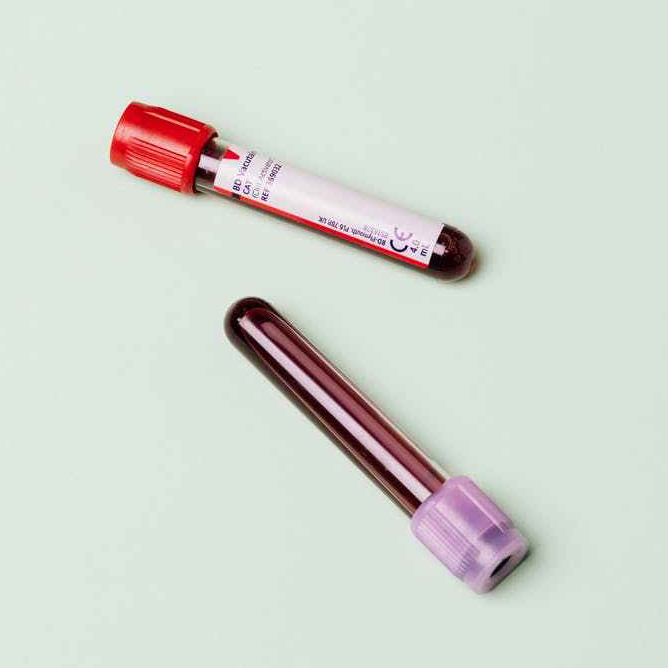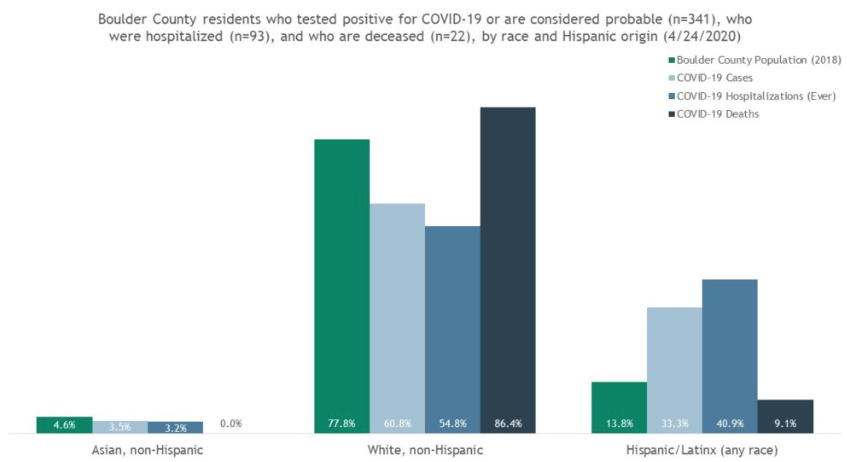Data: Boulder County’s Latinx population more likely to catch COVID, be hospitalized than white residents

Saturday, April 25, 2020
Boulder County’s Latinx population is being disproportionately impacted by COVID-19, according to the first racial/ethnicity data released by local public health officials this week.
Hispanics make up 13.8% of Boulder County residents but one-third of cases — more than double their share of the population. The hospitalization rate is higher still: 40.9% of all hospitalizations have been Latinx patients.
Those disparities have played out around the country, with black and brown Americans twice as likely to die from coronavirus as white residents. Boulder County’s inequities don’t appear to be fatal yet, as most of the 30 deaths have been concentrated in long-term care facilities.

The high rates of infection and severe illness among our Latinx residents is concerning, Susan Motika, Boulder County’s director of health systems policy and strategic initiatives, said at Tuesday’s council meeting.
“We’re asking ourselves, what are we going to do about this?” Motika said. “This is a finding not just in Boulder County; it’s across the state, and it merits a systemic solution. We need to take action.”
Boulder County needs to “think more” about improving the overall health of its Latinx residents, Motika said. A particular focus on prevention of chronic diseases is needed; such conditions are prevalent among non-white residents and are linked to more severe illness as a result of contracting coronavirus.
Hispanic residents are three times as likely as whites to rank their health poorly, according to the TRENDS Report released in the fall by Community Foundation Boulder County. Health is also strongly tied to income, as reflected in TRENDS: As income increased, so did the self-reported health of residents.
Latinx workers earn just 58% that of their Anglo counterparts, TRENDS also found, with a median income of $43,284 in 2017 compared to $85,309 for white residents.
(Disclosure: The author of this article also helped to compile data and author portions of the TRENDS report, though none related to health.)


The state is putting together a working group to specifically address racial disparities, Motika said; Boulder County officials will work with them. Part of the solution may include tweaking criteria for testing to prioritize vulnerable communities.
Health officials locally will also put a stronger focus on long-term care facilities, which have been hotbeds for the virus. Boulder County’s nursing and assisted-living properties were home to nearly a quarter of all cases, as of Tuesday, and 85% of deaths.
That is more than twice as high than the state as a whole. The Colorado Department of Public Health on Saturday reported that 40% of COVID-19 fatalities were related to LTCF.
The county health department has established a team specifically dedicated to working with these facilities, Motika said.
“We’re looking at testing and having ongoing meetings and checks with LTCF,” she said. “There really should be isolation and a moving of people who are not infected from people who are infected.”
Boulder Community Health saw an small increase in hospitalizations, mainly from care facilities, CEO Dr. Robert Vissers said. There is “some concern,” he said, about further “small outbreaks” that send people to the hospital, but “not a big surge.”
Whatever increase comes along, BCH can handle it, Vissers believes: “A month ago, it was a challenge. I feel much better about accommodating an increase.”
COVID in Boulder County
As of Saturday at 3:30 p.m.
482 cases (confirmed and probable positives)
112 hospitalized, to date
182 recovered
74 ongoing investigations
30 deaths
— Shay Castle, boulderbeatnews@gmail.com, @shayshinecastle
Want more stories like this, delivered straight to your inbox? Click
here to sign up for a weekly newsletter from Boulder Beat.
COVID-19 American Community Survey Boulder Boulder County Public Health Census Bureau city of Boulder Colorado Department of Public Health Community Foundation Boulder County COVID COVID-19 disparities ethnicity health Latinx officials pandemic race


As a 64-year-old white male with several underlying medical problems that necessitate living in a nursing home, rendering me more at-risk for either COVID-19 or the ordinary influenza strains around every year, I can attest to the fact that neither race nor ethnicity per se is anything we should be worried about.
Max R. Weller